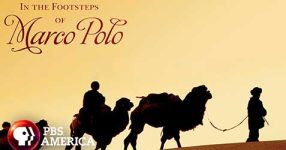The documentary “Cobra Gypsies” directed by musician and filmmaker Raphael Treza, takes viewers on a captivating journey into the lives of the Kalbeliya, a nomadic tribe in Northern India. Known as “those who love snakes,” they are the most emblematic tribe of the Rajasthan Gypsies. Treza’s exploration begins in Mumbai, leading to a 15-hour train trip to Rajasthan and the Thaar desert, where the arid land bordering Pakistan is punctuated by oasis and generous, fertile areas. Treza establishes his basecamp in Pushkar, a holy city appreciated for its hippie atmosphere, becoming a gateway to unravel the unique lifestyle of the Kalbeliya tribe.
Kalbeliya’s Livelihood and Cultural Practices
Biram, a Kalbeliya gypsy, becomes Treza’s guide and translator, introducing him to the nomadic life of his people. The Kalbeliyas are both nomadic agricultural workers and shepherds, embodying Hindu culture. Treza delves into their daily routines, from making charcoal using the Kata tree to building walls for protection against wild animals like panthers. The documentary showcases the multifaceted activities of Kalbeliyas, including henna-making, dance performances, horse training, and even encounters with wildlife, such as cobras. The Kalbeliyas’ rich cultural practices, including Holi celebrations and the vibrant use of colors, unfold before the lens, offering a glimpse into their unique traditions and festivities.
Kalbeliya’s Connection with Snakes
A significant aspect of the Kalbeliya’s identity is their connection with snakes, symbolized by the cobra. Treza captures moments of cobra handling during dance performances, highlighting the dancers’ expertise in managing the potentially dangerous reptile. The documentary explores the Kalbeliyas’ belief in the power of snake venom, with scenes of extracting cobra venom for Ayurvedic medicine. Surumnat, a sedentary Kalbeliya, showcases his snake-catching skills and introduces Treza to the diverse reptile life in Thaar’s desert, including monitor lizards and dangerous snakes. Treza’s immersion in the Kalbeliyas’ world provides a unique perspective on their beliefs and practices related to snakes.
Kalbeliya’s Social Structure and Traditions
The documentary sheds light on the Kalbeliyas’ social structure, including arranged marriages from childhood and the significance of daughters in their community. Treza documents a Kalbeliya wedding, capturing the rituals, traditions, and celebrations that mark this important life event. The Kalbeliyas’ influence on art and music, as well as their contribution to the development of castanets (kartals), is explored. Treza’s lens captures the nomadic camps, music concerts, and daily life of the Kalbeliyas, providing a comprehensive view of their unique cultural identity.
Kalbeliya Festivals and Future Outlook
As the documentary progresses, viewers are immersed in the vibrant atmosphere of the Kalbeliya festival, a four-day celebration featuring concerts, dancing, and showcases of their distinctive fashion. Treza explores the evolution of Kalbeliya fashion, emphasizing its uniqueness and perpetual evolution. The festival becomes a platform for the Kalbeliyas to express their individuality through clothing and engage in dance battles. The documentary concludes with Treza’s acknowledgment of the Kalbeliyas’ resilience, adaptability, and the belief in their ability to navigate the challenges of a changing world while preserving their cultural heritage. “Cobra Gypsies” stands as a testament to the enduring spirit of the Kalbeliya tribe and their contribution to India’s cultural mosaic.












